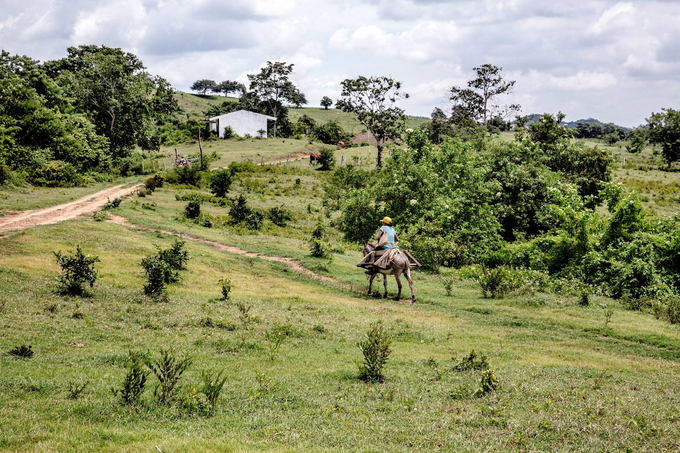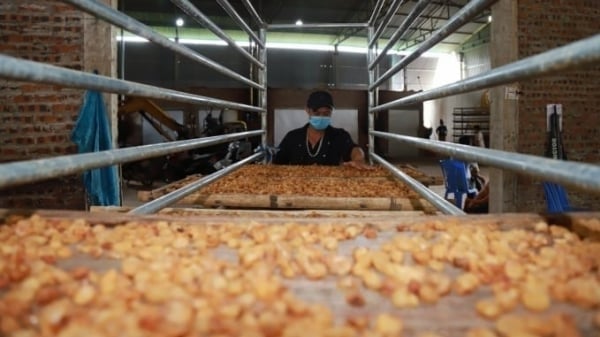May 20, 2025 | 17:50 GMT +7
May 20, 2025 | 17:50 GMT +7
Hotline: 0913.378.918
May 20, 2025 | 17:50 GMT +7
Hotline: 0913.378.918

A farmer in Colombia.
Closing the gap between ambition and implementation is the next frontier in the struggle to conserve the vast array of plant and animal species comprising life on earth and the habitats they rely on, including our own.
Currently, one out of every 11 people in the world is experiencing hunger, and projections show that 585 million people will be chronically undernourished by 2030. Without biodiversity, we risk our capacity to feed the world sustainably.
At this year’s COP16 Biodiversity Conference, the Food and Agriculture Organization of the United Nations (FAO) is focused on helping Members move from pledges to plans. While biodiversity goals are often associated with exotic animals, pristine wilderness and nature preservation zones, the key to global success is to ensure peace with nature by not only protecting but ensuring the sustainable management of biodiversity in agriculture and food systems.
“Agrifood systems solutions are absolutely central to facing the big challenges related to climate, biodiversity and land management,” says Director Kaveh Zahedi, Director of FAO’s Office of Climate Change, Biodiversity and Environment. “They need to be prioritized in multilateral environmental agreements, receive more resources in both qualitative and quantitative terms, and become fully integrated into national planning processes and strategies.
”The previous COP15, held in Kunming, China and Montreal, Canada, marked a watershed moment as 196 countries agreed on 23 targets for 2030 and four broader goals for 2050. Perhaps as important, and certainly so for FAO, was the fact that global leaders recognized the central role of the sustainable use of biodiversity, including through agriculture, pushing the policy and action frontier beyond conservation alone.
“Cali is the moment where this immense ambition has to turn into concrete plans, and we have to push to make sure the emphasis on using agriculture to promote biodiversity stays at centre stage,” Zahedi says.
Agrifood sectors – crop and livestock production, forestry, fisheries and aquaculture – are related in one way or another to all the targets of the Kunming-Montreal Global Biodiversity Framework (GBF).
The publication Delivering on the Kunming-Montreal Global Biodiversity Framework through agrifood systems, released this week, describes some of the links between each of the GBF targets and agrifood systems. This ranges from the targets on ecosystem restoration, invasive alien species and pollution to those addressing genetic resources for food and agriculture, soil health and pollination.
The conservation and sustainable use of biodiversity is and has always been at the core of FAO’s mandate. FAO’s work on biodiversity is guided by its Strategy on Mainstreaming Biodiversity across Agricultural Sectors and Action Plan and focuses on building resilient agrifood systems that can address food insecurity and malnutrition, in all its forms.
FAO is the custodian agency for monitoring around 25 headline, component and complementary indicators of the GBF.
Some FAO initiatives at COP16
FAO is engaged in a number of events and presentations during the COP16 summit, including the launch of a Germany-funded project in support of AFR100, a project aimed at restoring 100 million hectares of degraded land in Africa by 2030.
A special event celebrating Colombia’s ratification of the International Treaty on Plant Genetic Resources for Food and Agriculture, was held in Cali on 22 October 2024. Colombia thus becomes the 153rd contracting party of the Treaty.
Restoration Day on 30th October, part of the UN’s Decade on Ecosystem Restoration agenda, will feature the launch of the Guidelines on Target 2.
FAO also gives Members technical assistance with their National Biodiversity Strategies and Action Plans, known as NBSAPs. ensuring the integration of agrifood policies and practices. The Organization has been assisting 40 countries so far and is committed to expanding that support, including to cover the implementation and monitoring phases.
On 30 October, during the High-Level Session when more than 100 ministers from around the world are in discussion, FAO, together with the Secretariat of the Convention on Biological Diversity, are launching the Agri-NBSAPs Support Initiative. The initiative will focus on 15 countries and help them identify advanced financial tools, schemes and mechanisms and innovative policy instruments that incentivize biodiversity-friendly practices across agrifood systems and measure their impact on biodiversity and socio-economic outcomes, thus accelerating the implementation of the GBF.
FAO will also publish a new brief, Biodiversity Impacts of Nationally Determined Contributions Actions in Agrifood Systems, which examines how actions taken to pursue climate adaptation and mitigation goals through agrifood systems can impact biodiversity, and how to identify synergies and co-benefits between these highly interconnected areas of work.
Other publications include guidance and information on ecosystem restoration, land use planning, the role of protection, conservation and sustainable management of forests, and a series demonstrating how FAO works with the Global Environment Facility to access investment resources.
FAO’s main messages
It is essential that stakeholders gathered in Cali capitalize on COP15’s agreements and seize opportunities to integrate agrifood systems in their biodiversity planning and policy frameworks.
Agrifood systems solutions are climate, biodiversity and land solutions, offering a way to tackle major interlinked challenges facing people and the planet today. They need to be prioritized in multilateral environmental agreements and fully integrated into national planning processes and strategies.
More and more effective finance, almost certainly more than $1 trillion, will be needed to bolster biodiversity and climate actions, and targeting agrifood system transformation is critical.
At the same time, scaling up agrifood system solutions, through enabling policies, innovation and technologies, is fundamental to reach smallholder farmers and producers. Agrifood system transformation must be equitable, inclusive and gender-responsive for maximum impact.
Agrifood systems are also complex and offer a wide range of win-win solutions on the ground. FAO’s Zahedi points to soil restoration as an example promising outcomes with powerful utility for both humans and the environment: Effective interventions on the world’s degraded lands – a third of the total - can boost species richness, enhance carbon sequestration and raise crop yields.
(FAO)

(VAN) Dong Thap farmers attained an average profit margin of 64% during the summer-autumn 2024 crop (first season), while An Giang and Kien Giang farmers followed with 56% and 54%, respectively.

(VAN) As a doctoral student doing research on renewable energy and electrification at Harvard University, the author shares his musings on electricity, nature, and countryside memories.

(VAN) The decree on Extended Producer Responsibility (EPR) ensures transparent management and disbursement of support funds, avoiding the creation of a “give-and-take” mechanism.

(VAN) Hue City rigorously enforces regulations regarding marine fishing and resource exploitation, with a particular emphasis on the monitoring of fishing vessels to prevent illegal, unreported, and unregulated (IUU) fishing.

(VAN) Hanoi People's Committee has issued a plan on reducing greenhouse gas emissions in the waste management sector with 2030 vision.

(VAN) Vietnam's draft amendment to Decree No. 156 proposes a mechanism for medicinal herb farming under forest canopies, linking economic development to population retention and the sustainable protection and development of forests.

(VAN) In reality, many craft village models combined with tourism in Son La have proven effective, bringing significant economic benefits to rural communities.